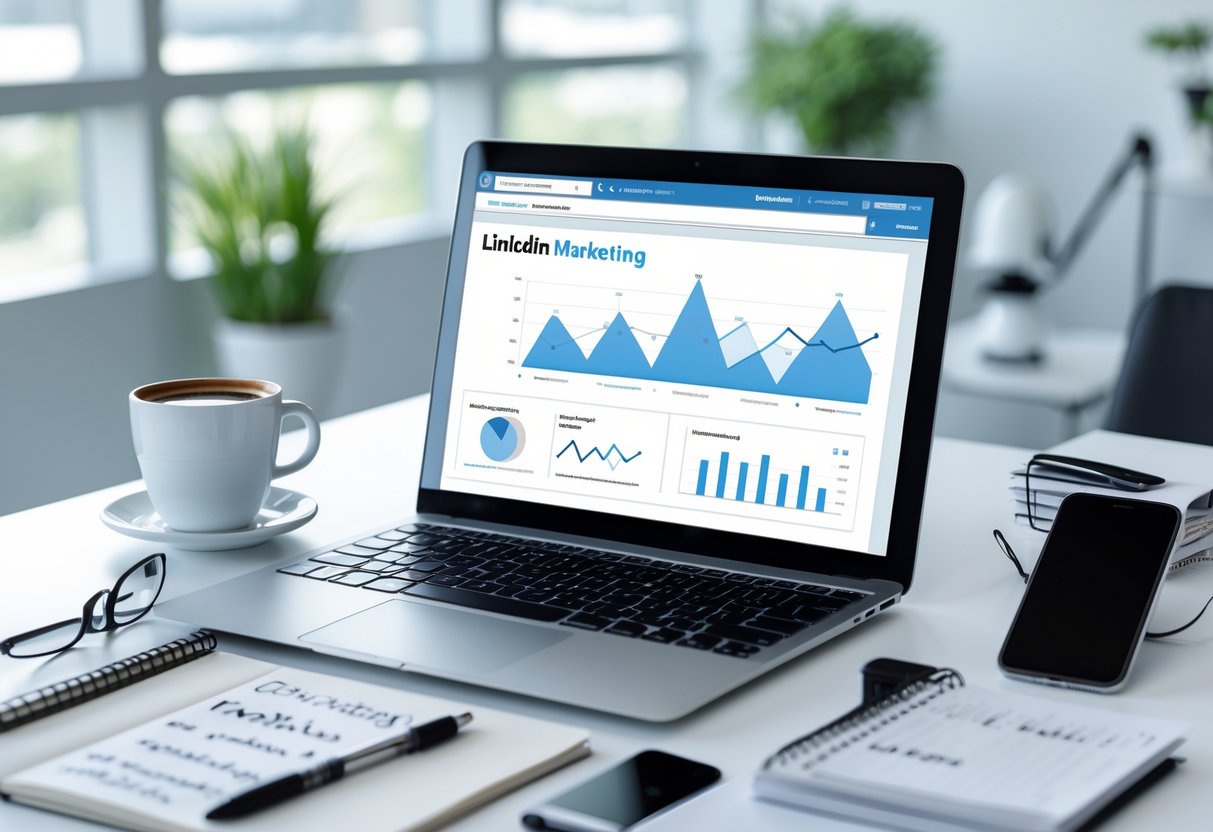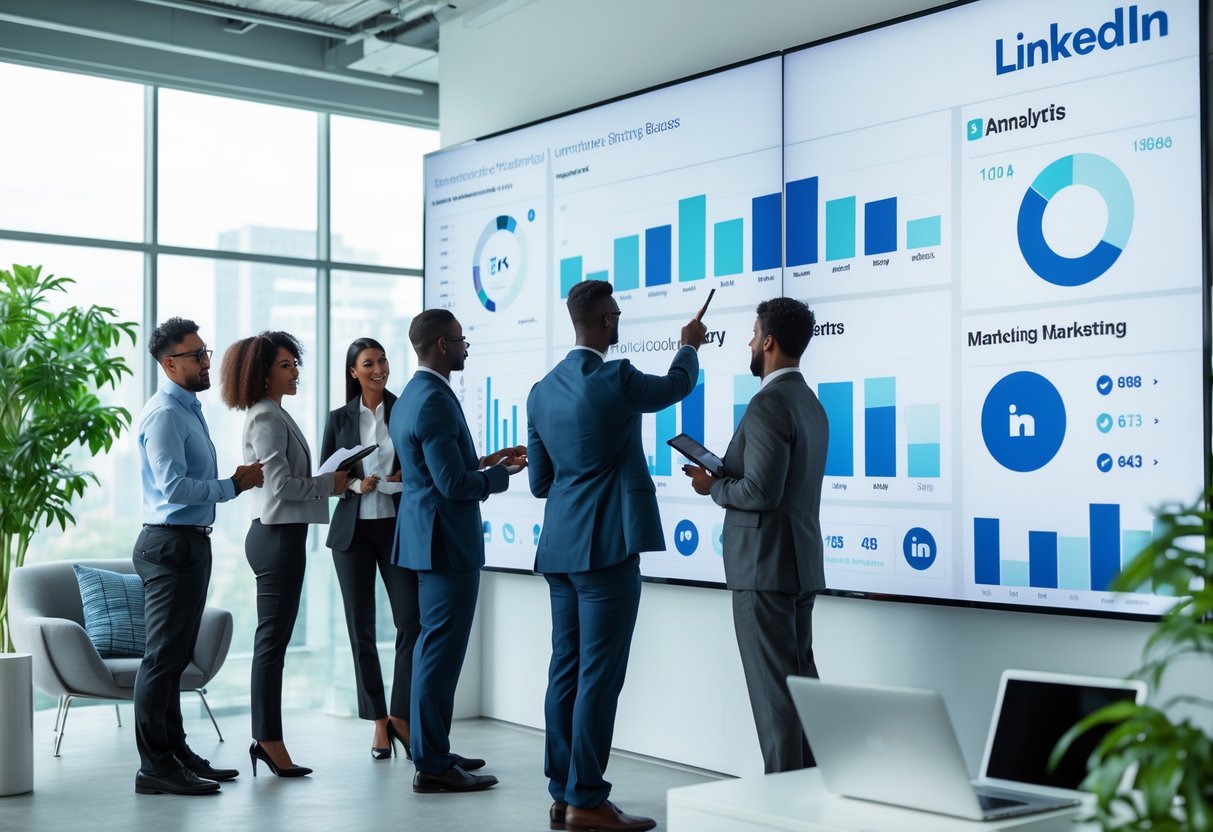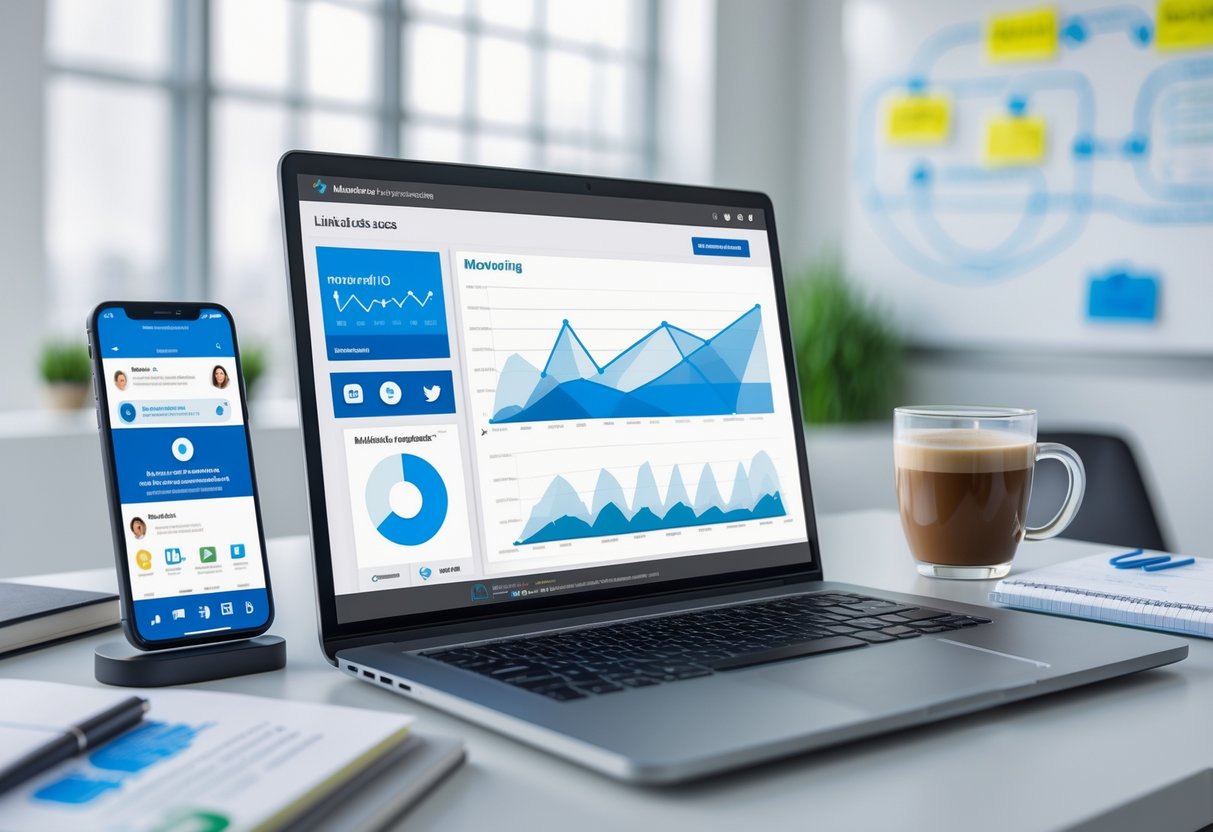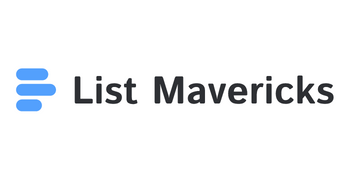LinkedIn has become much more than just a job search platform—it’s now a valuable tool for marketers and business owners. Learning the best LinkedIn marketing hacks can help anyone improve brand visibility, boost engagement, and reach the right audience quickly. Small changes in how someone uses LinkedIn can lead to big results, whether it’s updating a profile, posting the right content, or building a smart network.
By exploring proven tips used by top professionals, anyone can learn how to unlock new ways to gather leads, grow their connections, and get real business results. Using the right strategies and tools, anyone can stand out and make a meaningful impact in their industry. For more ideas and detailed hacks, visit these LinkedIn marketing tips and growth strategies.
Key Takeaways
- Effective LinkedIn marketing starts with a strong profile and smart content.
- Real growth comes from engagement and strategic networking.
- Using the right tools and hacks can increase leads and brand awareness.
Optimizing Your LinkedIn Profile for Marketing Success

A strong LinkedIn profile is the foundation for effective LinkedIn marketing. By focusing on personal branding, presenting information clearly, and using the right strategies, professionals can attract the right audience and increase their credibility.
Profile Picture Best Practices
A professional LinkedIn profile picture is essential for creating a strong first impression. Profiles with photos get more views and engagement compared to those without. Choose a recent, high-quality headshot with a plain background. The picture should show the face clearly, with good lighting and no distracting elements.
Avoid busy backgrounds, selfies, or casual group photos. Dress in business attire that matches your industry. Smile naturally and look approachable, as this builds trust and helps with personal branding. The recommended size is 400 x 400 pixels, ensuring the image does not blur. Following these simple steps can make a profile appear more professional and credible.
Crafting a Compelling LinkedIn Headline
The LinkedIn headline is more than a job title; it’s a chance to tell people what makes the user unique. Use the headline to include skills, specialties, or the value they offer. For instance, “Digital Marketing Specialist | Helping Businesses Grow Online” explains both the role and the benefit to the audience.
It is smart to focus on specific areas of expertise rather than broad job titles. Headlines should also include industry keywords, as these help the profile show up in more searches. A strong headline can make it easier for people to understand what the user does and why they are worth connecting with. For more ideas, review tips for writing a compelling headline and summary.
Keyword-Rich Job Titles and Summaries
Job titles and summaries should use keywords that relate to the role, skills, and industry. This makes the LinkedIn profile more discoverable by recruiters or clients searching for those keywords. Write job titles that include areas of expertise, for example, “SEO Content Writer | Social Media Expert.”
In the summary, explain what the professional offers, with clear examples of past achievements or results. List skills as bullet points to improve readability:
- Digital marketing
- Project management
- Content strategy
Adding measurable results makes the summary stronger, such as “Increased website traffic by 60% in six months.” Using relevant keywords and job details not only helps with search visibility but also with credibility.
Enhancing Credibility Through Contact Details
A credible LinkedIn profile always includes accurate and up-to-date contact information. Add an email address and links to a website or professional portfolio, if available. This makes it easier for potential clients or employers to get in touch.
Make sure other contact areas (like a Twitter handle, if used professionally) are also filled in and consistent. Keep information clear and free of errors. This will help show that the profile owner is serious about connections and opportunities.
People can use the “Featured” section to add links to recent work, media mentions, or projects. All contact and portfolio links should work and lead directly to professional content. Well-managed contact details add trust and help build a stronger personal brand, as explained in LinkedIn growth hacks for individuals and businesses.
Powerful Strategies for Engaging Your Target Audience

A well-crafted LinkedIn strategy improves engagement and helps users stand out as thought leaders. Specific actions—like creating quality content, smart keyword use, storytelling, and relationship building—are proven ways to increase visibility and drive action.
Maximizing Engagement with High-Quality Content
High-quality content is essential on LinkedIn. Sharing industry insights, useful tips, or practical case studies can position an individual or brand as a trusted voice. Content should be clear, accurate, and valuable to the audience.
Visuals play a big role in boosting engagement. Original images, infographics, or short videos grab attention quickly. Readers are more likely to interact with easy-to-read content that offers clear takeaways.
Consistency matters. Posting valuable content regularly helps keep followers interested and builds a reputation as a thought leader. Using a call-to-action at the end of posts, such as “Share your thoughts in the comments,” increases participation and keeps the conversation going.
Utilizing Hashtags and Keywords for Visibility
Adding relevant hashtags and keywords to posts increases their reach. Hashtags make content easier to find for people interested in specific topics, while keywords reinforce expertise and raise a profile’s visibility in LinkedIn search results.
When using hashtags, focus on a mix of popular and niche tags. Too many hashtags can look unprofessional, so two to five per post is usually best. Place them at the end of the post to keep the main message clear.
Including the right keywords, such as specific job titles, industry terms, or skills, helps content get found by the right audience. Posts and profiles that use effective keywords see more engagement and connection opportunities. For more tips on hashtags and keywords, check out these LinkedIn growth hacks.
Storytelling and Asking Questions
Storytelling creates a personal connection with the audience. Sharing real experiences, lessons learned, or success stories invites readers to relate and respond. Stories that show a challenge and solution encourage others to comment with their own experiences.
Asking questions at the end of a post—such as “How did you handle a similar situation?”—boosts engagement. It signals to readers that their opinions are valued, which leads to more comments and shares.
Short, direct stories paired with simple questions often get the best results. They encourage discussion and help build deeper relationships with followers.
Commenting and Building Relationships
Active commenting is one of the strongest ways to build relationships on LinkedIn. Leaving thoughtful comments on others’ posts demonstrates expertise and increases visibility within a specific network.
Responding to comments on personal posts shows followers that their input matters. People are more likely to engage with someone who interacts with them regularly.
Building relationships takes time. Sending personalized connection requests, following up with direct messages, and participating in ongoing discussions help create a strong professional network. Consistent engagement leads to valuable long-term opportunities. For more on building relationships and boosting engagement, see these proven LinkedIn hacks for growth.
Smart Networking and Community Building Techniques

LinkedIn networking works best when connections are real and interactive. Users should focus on finding ways to build trust, share knowledge, and keep up with industry updates through the platform.
Joining and Leveraging LinkedIn Groups
LinkedIn groups offer a smart way to meet professionals who share similar interests or who work in the same industry. Members should look for groups that are active and have ongoing discussions around topics they care about.
When joining groups, it helps to engage by commenting on posts and starting conversations. Consistent activity increases visibility and makes it easier to connect with potential clients or collaborators. Members can share helpful articles, answer questions, and provide support, showing their expertise and willingness to help.
Regular participation in groups allows users to stay current on trends and get tips from others in their field. To get the most value, it’s key to join groups with a clear focus and rules, as outlined in guides for LinkedIn tips for 2025.
Engage With Your Network
Active engagement with one’s network builds and strengthens relationships on professional social media. This means more than just accepting connection requests.
Users should reach out to connections with personal messages, comment on updates, and like or share useful content. Simple gestures—such as congratulating someone on a new job or offering feedback—can set someone apart from others.
Direct engagement can lead to new opportunities. Some professionals use comments and reactions to start private conversations that often develop into partnerships or new business leads. Building trust online requires regular and genuine interaction, as suggested by several expert networking strategies.
Hosting or Participating in LinkedIn Events
LinkedIn Events offer a way for professionals to learn, network, and share insights in real time. People can host webinars, workshops, or Q&A sessions that highlight industry trends and emerging topics.
When hosting, it’s important to plan clear topics, invite industry experts, and encourage attendees to take part through questions and polls. This creates an environment where everyone adds value, not just the host.
Participating in events also helps users meet new contacts and learn from others. By actively joining discussions, asking questions, and sharing ideas, attendees can quickly find potential clients and stay up to date on industry news. Hosting or joining LinkedIn Events is a leading strategy for building strong relationships and finding new business opportunities, as covered in several LinkedIn growth hacks.
Growth Hacks for Lead Generation and Brand Awareness

To grow on LinkedIn, it is important to attract qualified leads and make more people aware of your brand. Using tools like buyer personas, advanced search, and engagement methods such as polls and articles can help drive real results for LinkedIn marketing.
Defining Your Buyer Persona and Demographics
A well-defined buyer persona is the foundation of any successful lead generation campaign. Companies should identify their ideal client’s job titles, industries, company size, and specific pain points. This helps focus outreach efforts on prospects who are most likely to convert.
Teams should also study LinkedIn’s demographic filters. Information such as company location, experience level, and education can help pinpoint the best audience. By mapping these details, marketers can save time and improve the quality of leads.
Use a simple table to organize key traits:
| Buyer Trait | Example |
|---|---|
| Industry | Technology |
| Job Title | IT Director |
| Location | United States |
| Company Size | 100-500 employees |
Focusing on these details creates a more targeted marketing approach that can boost both lead generation and brand awareness.
Advanced Search for Qualified Leads
LinkedIn’s advanced search tools allow users to find potential clients based on detailed filters. Using options such as industry, role, location, and company size, marketers can quickly identify who fits their buyer persona. This saves time compared to searching through profiles one by one.
One helpful tip is to use Boolean search operators like AND, OR, and NOT. For example, searching for “marketing manager AND SaaS” will narrow results to those most relevant to a campaign. Regularly saving and updating these searches helps teams track new prospects as they appear.
Several growth hacks for lead generation also suggest connecting with people who engage on posts within your industry. This proactive strategy can uncover new opportunities while expanding your network.
Leveraging LinkedIn Polls and Articles
LinkedIn polls are short surveys that appear in users’ feeds. They encourage participation and attract attention, which increases brand awareness and positions a company as an expert in its field. Relevant poll questions can also reveal key trends and customer concerns.
LinkedIn articles allow deeper dives into topics relevant to your audience. Sharing useful content builds trust and keeps leads engaged. To increase visibility, use keywords, tag relevant people or companies, and add images to your articles.
Companies that use these LinkedIn marketing hacks often notice higher engagement and stronger relationships with potential clients. Polls and articles together can turn passive followers into real prospects.
Mastering LinkedIn Content Formats and Analytics

Success on LinkedIn comes from using the right content formats and tracking what works. Matching strategy to the strengths of LinkedIn’s features helps boost visibility, engagement, and marketing results.
Utilizing LinkedIn Native Videos and LinkedIn Live
LinkedIn native videos help marketers reach audiences directly in the feed. These videos autoplay without sound, grabbing attention and encouraging users to pause and watch. Native videos under 2 minutes usually perform best and can explain products, share tips, or provide quick updates. Using captions helps more viewers engage, especially in professional settings.
LinkedIn Live allows real-time broadcasting to followers and connections. Brands and creators use LinkedIn Live for Q&A sessions, product demos, and thought leadership talks. This format builds trust and community by letting people interact through live comments. Scheduling and promoting LinkedIn Live events in advance can help maximize attendance and engagement.
Here are a few best practices:
- Upload videos directly to LinkedIn, not through external links
- Use captions for accessibility
- Keep videos focused and concise
- Respond to live comments quickly during live streams
Implementing LinkedIn Advertising and Sponsored Content
LinkedIn ads help businesses target professionals by industry, job title, and more. LinkedIn advertising offers several formats, including sponsored content, message ads, and dynamic ads. Marketers often choose sponsored content for its strong placement in users’ feeds.
Sponsored content can be single-image ads, videos, or carousel posts. Well-planned sponsored content increases visibility among the right audience and supports b2b marketing and digital marketing goals. Marketers should set clear objectives for each ad, such as driving website visits, collecting leads, or promoting events.
Key points for effective LinkedIn ads:
- Use professional images and clear messaging
- Segment audiences for higher relevance
- Test different ad formats to improve performance over time
- Track each campaign with LinkedIn Analytics to measure results
Learn more about best practices for content formats and ads at Mastering LinkedIn Content Marketing: Strategies and Best Practices for 2024.
Analyzing Performance with LinkedIn Analytics and Post Analytics
LinkedIn Analytics provides detailed statistics on page visitors, followers, and post engagement. Marketers use this data to see which posts, formats, and topics attract the most attention and help achieve marketing goals.
Post analytics show stats like impressions, clicks, and engagement rates for each update. This data helps identify what resonates with the audience and which times generate the most responses.
To use analytics effectively:
- Check metrics weekly to track trends
- Compare performance by format, such as video vs. image posts
- Pay attention to click-through rates and reactions for measuring b2b marketing impact
LinkedIn Analytics is a vital part of fine-tuning strategy and using advanced LinkedIn content creation tips that deliver results.
Advanced Tools and Tips for LinkedIn Marketing Success

Many businesses use LinkedIn’s advanced features to reach qualified leads and make better connections. Setting up accurate targeting, using specialized tools, and understanding how content works can help marketers stand out on this busy social media platform.
Leveraging Sales Navigator for Prospecting
Sales Navigator is a premium LinkedIn tool that helps users find and reach high-value prospects. With this tool, they can filter prospects by industry, role, company size, and geography. This reduces wasted effort and makes it easier to find decision makers.
The tool also gives detailed contact details and insights, like recent job changes or shared connections. Users can save leads and update notes directly in Sales Navigator, helping them track conversations over time. This means sales and marketing teams won’t lose track of past interactions.
Sales Navigator makes outreach more personal and relevant. Since it works with LinkedIn’s messaging system, users can contact leads directly on the social media platform. This often leads to higher response rates and more qualified leads.
Utilizing Targeting and Company Size Filters
Refined targeting is essential to successful social media marketing on LinkedIn. The platform offers filters to narrow searches based on industry, location, function, seniority, and especially company size. By targeting the right company size, businesses can tailor messaging for small startups, growing midsize firms, or large enterprises.
To use these filters, users start by selecting criteria that match their ideal client profile. They might target technology managers at firms with 100–500 employees, for example. This precise targeting improves the quality of outreach and makes campaigns more efficient.
Advanced features like matched audiences and interest tags can also be used to sharpen targeting further. By knowing your audience and adjusting filters regularly, users keep their marketing efforts relevant and effective. This approach helps save time and resources while increasing the likelihood of conversions, which you can read more about on Single Grain’s LinkedIn tips page.
Increasing Dwell Time and Visibility
Content performance on LinkedIn is closely linked to dwell time, or how long people spend engaging with a post. Longer dwell times signal to LinkedIn’s algorithm that content is valuable, boosting visibility in the feed.
One way to increase dwell time is by using carousel posts, which let users swipe through multiple slides of information. Research shows carousel posts can reach almost twice as many people as text-only content. Including images or short videos also encourages viewers to pause and interact.
Short paragraphs, bullet points, and clear calls to action keep readers engaged. Making sure posts are easy to read on mobile devices is also important. By adapting content for higher engagement, marketers can make the most of LinkedIn’s social media marketing opportunities and help their posts reach a wider audience, as outlined by ViralSpy’s growth hacks article.
Frequently Asked Questions

LinkedIn marketing success depends on practical methods like optimizing profiles, posting engaging content, and using platform features. Businesses and professionals can drive more results by focusing on how they present themselves and interact with others.
What are the best strategies for successful marketing on LinkedIn?
Effective LinkedIn marketing often starts with a strong personal or company profile. Consistent posting, interacting in real time, and using new LinkedIn features like polls or newsletters can help increase visibility. Using proven hacks and workflows can give a measurable boost to reach and engagement.
How can you optimize your LinkedIn profile for better visibility in your industry?
Optimizing a LinkedIn profile includes using a professional photo, writing a clear headline, and listing measurable achievements. People should use industry keywords in their summary and work experience. Keeping profiles updated and adding new skills helps attract searches from recruiters and peers.
What methods are most effective for increasing engagement on LinkedIn posts?
Posts with questions, polls, or personal stories tend to get more comments. Tagging people, adding images or short videos, and posting during peak hours increases interaction. Regular engagement with others’ content and being consistent also boosts post performance according to LinkedIn growth experts.
What techniques can help improve your LinkedIn content’s reach and impact?
Using relevant hashtags and engaging with comments soon after posting increases visibility. Sharing insightful articles and starting discussions related to trending industry topics draws more attention. Scheduling content and experimenting with new formats, such as LinkedIn Live, are also recommended strategies for greater impact.
How do you utilize LinkedIn analytics to refine your marketing efforts?
LinkedIn analytics offers details about viewers, post impressions, and engagement rates. By checking which types of content get the most reactions, marketers can adjust future posts. Tracking follower growth and audience demographics helps improve targeting and message relevance.
Can you leverage LinkedIn groups for networking and marketing purposes?
Joining active LinkedIn groups in specific industries helps users connect with new contacts and amplify their reach. Sharing helpful content and answering questions in these groups builds trust and authority. Marketers can use group discussions to gather insights and promote their brand naturally.

